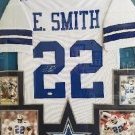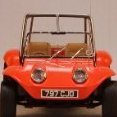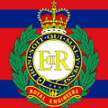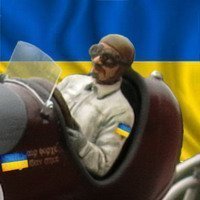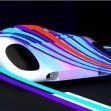-
Posts
1,393 -
Joined
-
Last visited
About Roy vd M.

Profile Information
-
Gender
Male
-
Location
Netherlands
Recent Profile Visitors
Roy vd M.'s Achievements

Very Obsessed Member (5/9)
2.8k
Reputation
-
Unfortunately I’ve not been able to do that either. Not sure if it’s possible. After uploading the images (from an iPhone) I always use a computer to copy the bb link onto the forum. Happy to see this thread is still being utilised.
-

A BIG Rolls-Royce Version II 1-7-2020
Roy vd M. replied to Codger's topic in Work In Progress - Vehicles
From what I have read here and there the Pocher Mercedes cars had as many flaws as the others, taking major surgery to get things ‘right’. Mr Cox sure spends some time to turn the model into something rather different, to fit his and/or his client’s wishes and vision. Looks fabulous. -
That really, really does look nice and realistic.
-
Wow..! I'd certainly agree to that recommendation.
-
I had not reacted before in the thread, not having followed it too closely although the Mercedes-Benz 300SL is one of my dream cars. And that has always been for me, I remember having a 1/43 specimen when I was a kid. And Tamiya is one of my favourite kit makers too. It's just that I've so much reading going on and the scale 1/24 is something I'm not particularly interested in anymore. It's become a bit too common a scale. That said, sometimes I look into this thread and I'm much in awe about what I see. Beautiful detail work, such as the belts... wow. It reminds me so much of your -equally detailed- work on the 1/8 Bugatti. I'm sure I am not the only one who is patiently anticipating / awaiting your return to the Bugatti 50T workshop. That glorious Pocher build with moving gas pedal... beautiful finish... can't wait Is there a chance that maybe after this build...? Or after the next? Meanwhile I wish you luck in solving the paint problem and finalizing this nice model.
- 347 replies
-
- 1
-

-
- Scratch
- Mercedes 300SL
-
(and 1 more)
Tagged with:
-

Revell and Heller E Types... comparison
Roy vd M. replied to cmatthewbacon's topic in Vehicle Discussion
Thanks for taking the trouble to further on to this comparison. I'll rectify my post in the other topic and will take this up with the other forum. -

Revell and Heller E Types... comparison
Roy vd M. replied to cmatthewbacon's topic in Vehicle Discussion
In continuation of this post: could you please also make a comparison between the chrome sprues? I was assured on another forum that at least the chrome sprues between the Heller and Revell kits were the same. And if they are, can you find any other similar sprues? If none, I'll have to make a round of rectifications along this forum and two others. -

Pocher 2021.... wow! Just one new kit, but it's a winner...
Roy vd M. replied to cmatthewbacon's topic in The Rumourmonger
That's easily said.. my statement was the result of a discussion between three folks on another forum. All three were convinced at least some sprues were original Hellers. To be sure I googled for a comparison but could not find anything at that point in time. I have now looked at your comparison here: If I see it correctly it only regards the body. It comes very clear that the bodies from both kits are very different. Could you also make a comparison of the chrome sprues? That's the part of the kit they literally said would be the same. Perhaps this topic about Pocher is not the place to go into deeper discussion about this though. I'll write a post in the comparison topic too, so that discussion can continue there. EDIT: previous post rectified and apologies added. -

Pocher 2021.... wow! Just one new kit, but it's a winner...
Roy vd M. replied to cmatthewbacon's topic in The Rumourmonger
For sure it is exciting news, from a legendary brand. Some aspects of the classic Pocher kits may have had their flaws but that is more or less true with any kit from any kit maker. Following your 'one tool per year' remark, yesterday I made this overview of model kits issued by Pocher: CLASSIC POCHER I - Fiat F2 - Alfa Romeo 8C (Monza and Spider Touring Gran Sport) - Rolls Royce (Sedanca and Torpedo) - Mercedes-Benz 500K / 540K - Bugatti 50T CLASSIC POCHER II - Volvo F12 / F16 - Porsche 911 - Ferrari Testarossa - Ferrari F40 HORNBY - Lamborghini Aventador - Lamborghini Huracan - Ducati Panigale 1:4 - Lotus 72 F1 That makes the Lotus the 13th base model since 1966 (=averagely a new one each 4,2 years). One could also look at it this way: if each half year a new moulding were announced and issued, the news of such would grow less exciting. -

Pocher 2021.... wow! Just one new kit, but it's a winner...
Roy vd M. replied to cmatthewbacon's topic in The Rumourmonger
That's great news, thanks for explaining. I'll update the post on the other forum as well, bearing your elaboration. -

Pocher 2021.... wow! Just one new kit, but it's a winner...
Roy vd M. replied to cmatthewbacon's topic in The Rumourmonger
I too am wondering what happened to the 300SL project. Perhaps it was too expensive, using working lights etc.? Not sure if the moulds had already been finalized and whether we will ever hear from that undertaking again. I'd like to share some reserve I just wrote down on another forum: Although Pocher indeed states "new tool" I cannot help it but wonder whether that is true for all of the kit. If so, that would be very good news for the hobby. EDIT 8 JANUARY: IT WILL INDEED BE A 100% NEW TOOL, SEE REACTION ON BEHALF OF POCHER BELOW. But: - A comparison comes to mind. Revell's recent E-type kit (2020) was promoted as 'new tool'. Modellers have been left disappointed to find out that about the only thing that's new are the engine sprues. The rest of the kit is the old Heller (1978). Why then say 'new tool'? It suggests that all tooling was new. Pocher uses the same words 'new tool'. Perhaps this is the same strategy as Revell's. In their description (see here) they mention 'real rubber tyres'. Perhaps they made a new mould ONLY for the tyres and think that's enough to label their kit 'new tool'. Something to be wary of; and it would be the first time in the company's history that Pocher didn't design its own moulds. EDIT 9 JANUARY: THIS WAS AN ERRONEOUS REMARK OF MINE AS REGARDS REVELL'S E-TYPE KIT. SEE BELOW CMATTHEWBACON'S REMARK AS WELL AS MY RESPONSE TO HIS REMARK AND LINK TO HIS TOPIC WITH COMPARISONS BETWEEN REVELL'S AND HELLER'S KITS. MY APOLOGIES TO REVELL AND ALL FORUM READERS WHO FOUND THEMSELVES MISINFORMED BY MY ABOVE REMARK, FOR THE MISUNDERSTANDING AND UNTRUE INFORMATION (WHICH I WAS INCORRECTLY INFORMED TO BE TRUE). - Following the above, why did Pocher not use the words "100% new tooling"? - One more reason for restraint is... why of all thousands of possible subjects choose that one model that has already been done? One of the reasons why I'm working on the Delage is that nobody has done it before in 1/8, so that it will be a unique model. Few 1/8 models have been issued although there is a (niche) group of afficionados for that sale. It puzzles me greatly that of all possible choices, this was the one effectuated. Considering Pocher's current home (Hornby - England) one could have expected a British subject to be chosen, but why not a classic Williams F1 car? A Vanwall? A Benneton F1? Or if it must be a Lotus, why not Jim Clark's 25? Or supercars: the McLaren 720S? Mclaren F1? Jaguar XJ220? Even if no blueprints should exist, with modern electronic measuring and scanning techniques highly realistic moulding should be possible. This line of thoughts leads me to agreement with Don's reserve, until proven otherwise, that the new Pocher kit might well use the old Entex moulds (originally produced by the company 'Grip', see here). (From what I hear coming from a modeller who built the Entex kit, it is rather flawed) -

Delage 15-S-8 Grand Prix (1/8)
Roy vd M. replied to Roy vd M.'s topic in Work In Progress - Vehicles
Hi Mark, Unfortunately I must disappoint you as I have never undertaken any project comparable to this in scale and extent. Several scratchbuilding exercises have been done, but most of this is new to me. That's also why (in the first vlog I mentioned this) this will probably be an entertaining journey for the followers of this topic: I'll make plenty of mistakes, many of which I'll show. The reason: I think these are more fun to watch than the always 'perfect' work of master modellers; and it's an easier way of learning from mistakes than from perfectness. I'll show you some photos of a few builds that all had something unusual. First, a BMW 507. The challenge was: strictly out of box!! Only paint, glue and weathering stuff could be used. For example, the headlight bulbs were made out of drops of CA. I spent ages sanding everything to scale (for example the chrome T-piece on the bonnet). I used weathering to try reach a realistic result. For an out of box-build, the amount of spent time is ridiculous: 164 hours. Sometimes not that much time is needed. For a group build idea, I built this halftrack. The idea was: start now, finalize the model 50 hours later. Sleeping time was included into those 50 hours. I read in my notes that I slept a total of 4 hours and spent 46 hours building. In all, this was a very stressful, somewhat fun build but afterwards I was ill for two or three days and I'm very sure it was because of the stress. Interior and engine bay was painted and weathered. The bonnets and rear door were hinged (scratchbuilt) and made to open. Part milling/lathe exercise, part detail-up for my Volkswagen Beetle (Revell) I set myself the challenge to build as accurate and detailed a carburettor 1/24 scale as I reasonably could. Not entirely finalized (Fiat 806 became a passion and I was ever so slightly distracted haha) but probably 80% done. As it is now, it consists of 64 parts of metal and paper. A little over a year ago my daughter and I finished the Tamiya 1/12 Honda RA273. We video logged all of the build progress. You can see it here. It was a fun (not always but often) father-daughter project. She (7 years old) did approximately half of the airbrushing, sanding et cetera. Five years ago I built this engine of the Krupp Titan (Revell kit). I had wild plans for an alternative lighting-technique but unfortunately I never got to it. Not wanting to mess up all the detailing on the engine (=the photos show everything dryfitted, you'll not that everything is not aligned) I started another project to test that lighting-technique on but that new project was soon interrupted. Might be resumed one day because I still think it's very interesting to try to get a better lighting effect on scale models. I not only like building cars. For a group build I gave the 1/72 Hasegawa Yokosuka Ginga a try. With this build I used a technique 'borrowed' from a ship modeller, to simulate the panel and frame lines of the real plane, a detail that's usually left out (which makes many planes look 'flat-skinned'. The effect took many many hours to implement and, as I like to always use subtle weathering, can only be noticed if you're close to the model. Here you can see the panel line-effect: right part of the wing wasn't done yet. Last build I started (beside the Delage) was Miniart's kit of the LGOC London bus. I changed the rocker / valve / spring assembly of the engine as the kit didn't depict this correctly. This was the way it looked before our house caught fire. There is only smoke / smell damage so I'm not sure if I'll be able to reprise the build. Perhaps some a coat of varnish will suffice. I hope this is what you had in mind of me showing you. Alas, no projects similar to the Delage. -

Delage 15-S-8 Grand Prix (1/8)
Roy vd M. replied to Roy vd M.'s topic in Work In Progress - Vehicles
Sabrejet and Nick, thank you for your comments! I much appreciate them. I look forward to 'manufacturing' the engine most of all, too. Hopefully it will prove to be a logical starting point, although Gerald Wingrove always started his builds at the wheels and most other builders start with the frame. Not sure yet, but hopefully it will be the engine. I'll let logic make that decision rather than passion There will be no 3D-printing in this build (or so I still say..); as I see it now, the car will be 90% drawn before I will start scratchbuilding it from brass and aluminium. The full car will be scratchbuilt, so the parts I won't have sketched will be built as well (that's mainly the body shell). I require this drawing to be made because no blueprints are available. Some do exist (engine / transmission) but are unfortunately privately held. The full-car drawings that were made before by Cresswell and others differ from one another in many aspects so I needed to know the real dimensions. That's why I headed over to Florida to take dimensions and make endless photos, proving invaluable source for the drawing that's now being developed. -

Delage 15-S-8 Grand Prix (1/8)
Roy vd M. replied to Roy vd M.'s topic in Work In Progress - Vehicles
Yes progress has been rather wild, if compared to the past two years. And it's really fun too. I think the Heller kit (of the D8) is still being produced. Heller kits are certainly not among the most accurate, usually (with some pleasant exceptions, such as the 1/8 Citroen Traction Avant). The D8 is a beautiful car, one of Delage's crown jewels. Although Delage cars are currently quite affordable, the D8 is one exceptions to that general rule. 457. On the last day of the year I'd like to present an interim view (in between two videos). An important point has been reached: for the first time since drawing the wheels every component is (approximately) joined. Progress: rear brake drums, grille, crank, rear axle, rear leaf suspension and connectors between axle and leaf springs. Building time: 47h, dimensions study and sorting: 216h, drawing time: 174h.


